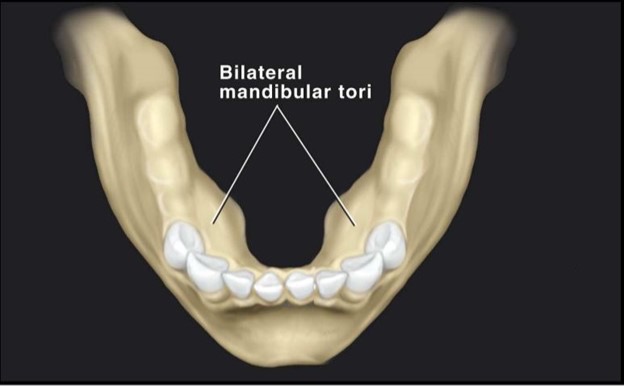In today’s fast-paced and interconnected world, the importance of health protection cannot be overstated. With the rise of global travel and trade, infectious diseases can spread quickly and easily across borders, posing a threat to public health. Moreover, the increasing prevalence of chronic diseases and environmental hazards has made it crucial for individuals and communities to prioritize their health and take preventive measures to protect themselves. In this blog post, we will explore the various aspects of health protection, including preventive health measures, strategies for health maintenance, health risks and mitigation, immunization and vaccination, disease surveillance and control, health promotion campaigns, environmental and occupational health concerns, the role of technology in health protection, and global health initiatives.
Preventive Health Measures
Preventive health measures are actions taken to prevent or delay the onset of diseases and promote overall health and well-being. These measures are essential in maintaining good health and reducing the burden of illness on individuals and society. Some common preventive health measures include regular exercise, healthy eating habits, and avoiding harmful substances such as tobacco and excessive alcohol consumption.
Regular Exercise
Regular physical activity is crucial for maintaining good health and preventing chronic diseases such as heart disease, diabetes, and obesity. According to the World Health Organization (WHO), adults aged 18-64 should engage in at least 150 minutes of moderate-intensity aerobic physical activity throughout the week or at least 75 minutes of vigorous-intensity aerobic physical activity. Additionally, muscle-strengthening activities should be done at least two days per week. Regular exercise not only helps in weight management but also improves cardiovascular health, strengthens bones and muscles, and reduces the risk of developing chronic diseases.
Healthy Eating Habits
A balanced and nutritious diet is essential for maintaining good health and preventing diseases. A healthy diet should include a variety of fruits, vegetables, whole grains, lean proteins, and healthy fats. It is also important to limit the intake of processed and high-fat foods, as well as sugary drinks. A healthy diet can help in maintaining a healthy weight, reducing the risk of chronic diseases, and improving overall well-being.
Avoiding Harmful Substances
Tobacco use and excessive alcohol consumption are two of the leading causes of preventable death worldwide. According to the WHO, tobacco kills more than 8 million people each year, while alcohol is responsible for 3 million deaths annually. These substances not only increase the risk of developing various types of cancers but also contribute to cardiovascular diseases, respiratory diseases, and mental health disorders. Therefore, avoiding or limiting the use of these harmful substances is crucial for protecting one’s health.
Strategies for Health Maintenance
Apart from preventive measures, there are various strategies that individuals and communities can adopt to maintain good health and protect themselves from diseases.
Regular Health Check-ups
Regular health check-ups are essential for detecting any potential health issues early on and taking necessary actions to prevent them from worsening. These check-ups may include blood tests, screenings for various diseases, and physical examinations. Early detection of diseases can significantly improve treatment outcomes and reduce the burden of illness.
Managing Stress
Stress can have a significant impact on both physical and mental health. Chronic stress can weaken the immune system, making individuals more susceptible to illnesses. Therefore, it is essential to manage stress through techniques such as meditation, yoga, and regular exercise. Seeking professional help when needed can also be beneficial in managing stress.
Mental Health Awareness
Mental health is an integral part of overall health and well-being. However, it is often overlooked and stigmatized, preventing individuals from seeking help when needed. It is crucial to raise awareness about mental health and promote open discussions to reduce the stigma surrounding it. Additionally, providing access to mental health services and support can help individuals maintain good mental health and prevent the onset of mental health disorders.
Health Risks and Mitigation
Despite taking preventive measures and adopting strategies for health maintenance, individuals may still be exposed to various health risks. These risks can range from environmental hazards to infectious diseases. Therefore, it is essential to understand these risks and take necessary actions to mitigate them.
Environmental Hazards
Environmental hazards such as air pollution, water contamination, and exposure to toxic substances can have a significant impact on health. According to the WHO, around 12.6 million deaths each year are attributable to unhealthy environments. To mitigate these risks, governments and organizations must implement policies and regulations to reduce pollution and protect the environment. Individuals can also take steps to reduce their exposure to environmental hazards, such as using public transportation or carpooling to reduce air pollution and avoiding the use of plastic to reduce waste.
Infectious Diseases
Infectious diseases are caused by pathogenic microorganisms such as bacteria, viruses, parasites, and fungi. These diseases can spread quickly and easily, posing a threat to public health. To mitigate the risk of infectious diseases, governments and organizations must invest in disease surveillance and control measures, including early detection, isolation of infected individuals, and contact tracing. Additionally, individuals can protect themselves by practicing good hygiene, getting vaccinated, and avoiding close contact with infected individuals.
Immunization and Vaccination
Immunization and vaccination play a crucial role in protecting individuals and communities from infectious diseases. Vaccines work by stimulating the body’s immune system to produce antibodies that provide protection against specific diseases. According to the WHO, vaccines prevent an estimated 2-3 million deaths each year. Some common vaccines include those for measles, polio, influenza, and hepatitis B.
Types of Vaccines
There are several types of vaccines, including live attenuated vaccines, inactivated vaccines, subunit vaccines, and conjugate vaccines. Live attenuated vaccines contain weakened forms of the virus or bacteria, while inactivated vaccines contain killed versions of the pathogen. Subunit vaccines use only specific parts of the pathogen to stimulate an immune response, and conjugate vaccines combine a weak antigen with a strong one to enhance the immune response.
Vaccine Safety
Vaccines go through rigorous testing and clinical trials before being approved for use. The WHO has strict guidelines for vaccine safety, and all vaccines must meet these standards before being distributed. However, like any medication, vaccines may cause mild side effects such as fever, soreness at the injection site, or a rash. These side effects are usually temporary and resolve on their own.
Disease Surveillance and Control
Disease surveillance is the ongoing systematic collection, analysis, and interpretation of health data for the planning, implementation, and evaluation of public health interventions. It plays a crucial role in identifying disease outbreaks, monitoring disease trends, and evaluating the effectiveness of control measures. Disease control, on the other hand, involves taking necessary actions to prevent, reduce, or eliminate the spread of diseases.
Disease Outbreaks
A disease outbreak occurs when there is a sudden increase in the number of cases of a particular disease in a specific area or population. Disease outbreaks can be caused by various factors, including environmental hazards, natural disasters, and human behavior. To control outbreaks, it is essential to identify the source of the disease and take necessary actions to prevent further spread.
Disease Eradication
Disease eradication refers to the permanent reduction of the worldwide incidence of a specific disease to zero. One of the most notable examples of disease eradication is smallpox, which was declared eradicated in 1980 after a global vaccination campaign. Currently, efforts are underway to eradicate polio, with only two countries remaining endemic to the disease.
Health Promotion Campaigns
Health promotion campaigns aim to raise awareness about health issues and promote healthy behaviors and lifestyle choices. These campaigns can be carried out by governments, organizations, or individuals and can target specific populations or the general public.
Examples of Health Promotion Campaigns
Some common health promotion campaigns include those for smoking cessation, healthy eating, physical activity, and mental health awareness. For example, the “Stoptober” campaign in the UK encourages smokers to quit smoking for the month of October, while the “Movember” campaign raises awareness about men’s health issues such as prostate cancer and mental health.
Effectiveness of Health Promotion Campaigns
The effectiveness of health promotion campaigns depends on various factors, including the target audience, the message being conveyed, and the methods used. Some campaigns may have a significant impact on behavior change, while others may not be as effective. Therefore, it is crucial to evaluate the effectiveness of these campaigns and make necessary changes to improve their impact.
Environmental and Occupational Health Concerns
Environmental and occupational health concerns refer to the risks posed by environmental hazards and workplace hazards to human health. These concerns can range from air pollution and water contamination to exposure to hazardous substances in the workplace.
Air Pollution
Air pollution is a major environmental health concern, with an estimated 4.2 million deaths each year attributed to outdoor air pollution. Exposure to air pollutants can cause respiratory diseases, cardiovascular diseases, and even cancer. To reduce the risk of air pollution, governments must implement policies and regulations to control emissions from industries and vehicles, while individuals can take steps to reduce their carbon footprint, such as using public transportation or walking instead of driving.
Workplace Hazards
Occupational hazards are risks that workers face in their workplace, which can lead to injuries, illnesses, or even death. These hazards can include physical hazards such as noise and radiation, chemical hazards such as exposure to toxic substances, and biological hazards such as exposure to infectious agents. Employers have a responsibility to provide a safe working environment for their employees and take necessary measures to mitigate workplace hazards.
The Role of Technology in Health Protection
Technology has played a significant role in advancing health protection measures. From disease surveillance systems to telemedicine, technology has revolutionized the way we approach public health.
Disease Surveillance Systems
Disease surveillance systems use technology to collect, analyze, and interpret health data to monitor disease trends and identify outbreaks. These systems can help in early detection and response to disease outbreaks, allowing for prompt control measures to be implemented.
Telemedicine
Telemedicine refers to the use of technology to provide healthcare services remotely. It has become increasingly popular, especially during the COVID-19 pandemic, as it allows individuals to consult with healthcare professionals without leaving their homes. Telemedicine has also been used to provide medical care to underserved populations in remote areas, improving access to healthcare services.
Wearable Technology
Wearable technology such as fitness trackers and smartwatches has become increasingly popular in recent years. These devices can track various health parameters, including heart rate, sleep patterns, and physical activity levels. They can also provide personalized health recommendations, making it easier for individuals to monitor and improve their health.
Global Health Initiatives
Global health initiatives refer to collaborative efforts by governments, organizations, and individuals to address global health issues. These initiatives aim to improve health outcomes and reduce health disparities among different populations worldwide.
Examples of Global Health Initiatives
Some notable global health initiatives include the World Health Organization’s (WHO) Global Health Security Agenda, which aims to strengthen countries’ capacities to prevent, detect, and respond to infectious disease threats. The United Nations’ Sustainable Development Goals (SDGs) also include targets related to health, such as reducing maternal and child mortality rates and combating communicable diseases.
Impact of Global Health Initiatives
Global health initiatives have had a significant impact on improving health outcomes worldwide. For example, the WHO’s Global Polio Eradication Initiative has reduced the number of polio cases from an estimated 350,000 in 1988 to just 33 reported cases in 2018. These initiatives also play a crucial role in addressing health disparities and promoting health equity among different populations.
Conclusion
In conclusion, health protection is essential for maintaining good health and preventing the spread of diseases. Preventive health measures such as regular exercise, healthy eating habits, and avoiding harmful substances can help individuals maintain good health. Strategies for health maintenance, including regular health check-ups and stress management, are also crucial in protecting one’s health. Mitigating health risks through environmental and occupational health measures, as well as disease surveillance and control, is necessary to prevent the spread of diseases. Immunization and vaccination, along with health promotion campaigns, play a vital role in protecting individuals and communities from infectious diseases. The use of technology and global health initiatives has also significantly contributed to advancing health protection measures worldwide. By prioritizing health protection, individuals and communities can lead healthier and more fulfilling lives.



